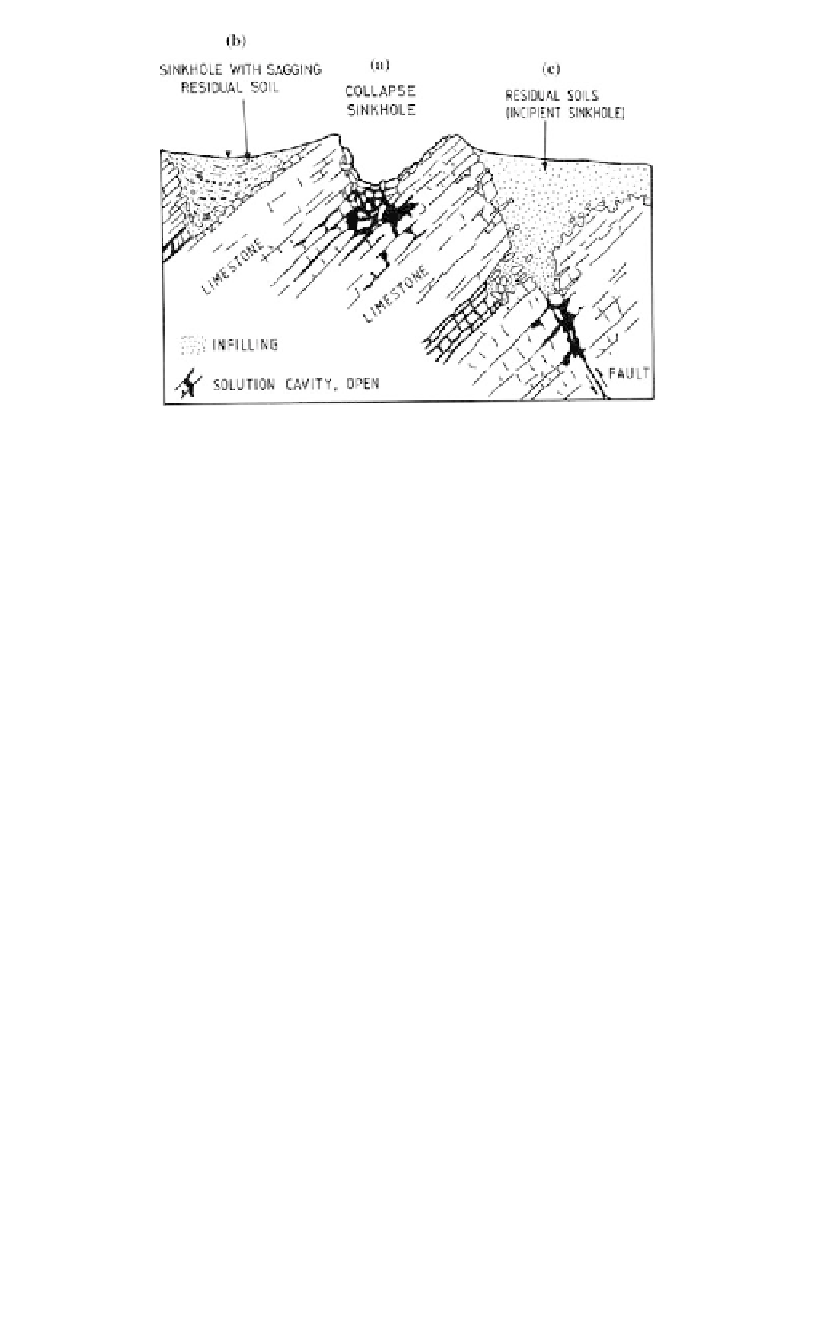Environmental Engineering Reference
In-Depth Information
Figure 3.27.
A typical weathering profile in dense, relatively pure carbonate rock (Based on Deere and
Patton, 1971).
cements. These effects are illustrated by strong dolomitic siltstones which occur widely in
South Australia. Many weathered exposures of these rocks appear to have lost all of their
dolomitic cement, but are still weak or medium strong rock, due to some non-carbonate
cement. A few beds within such a sequence at and near Little Para Dam appear to lack this
non-soluble cement and these beds form very low density, very weak rock, grading to
clayey silt and small cavities (see
Figure 3.33
in Fell et al., 1992).
3.7.1.3
Rock masses composed of porous, low density carbonate rock substance
(usually Category Y)
Most of these rocks are weak to very weak calcarenites. In many cases the carbonate
grains are recognizable shell fragments. The rocks are usually in horizontal or gently dip-
ping beds and are relatively free from joints or other defects of tectonic origin.
These rocks have sufficient substance permeability to allow surface waters to enter and
migrate downwards, causing both solution and redeposition effects. The 8 m high quarry
face in
Figure 3.28
shows a typical profile. The very weak calcarenite here is a windblown
deposit of Pleistocene Age. It is off-white in colour and overlain by yellow-brown quartz
which appears dark grey in the photograph. The profile in the calcarenite is characterized
by the following:
-Vertical pipes or tubes; each is surrounded by an annular zone of calcarenite which is
much more dense and strong than elsewhere in the mass. The tubes have been infilled
with the quartz sand, so show up well where exposed on the face;
-Vertical pinnacles of calcarenite which are much more dense and strong than elsewhere in
the mass.
The tubes have been formed by solution of the calcarenite. Strengthening of their rocky
surrounds and of the pinnacles appears to have been caused by redeposition of calcite
derived from that solution process and possibly also from solution of calcarenite which
previously existed above the present ground surface.
The porous, low-density carbonates rarely contain large cavities like those in dense,
jointed carbonates. However Twidale and Bourne (2000) describe many shallow sink-
holes up to 10 m across, and several much larger, on wind-deposited calcarenite in South

